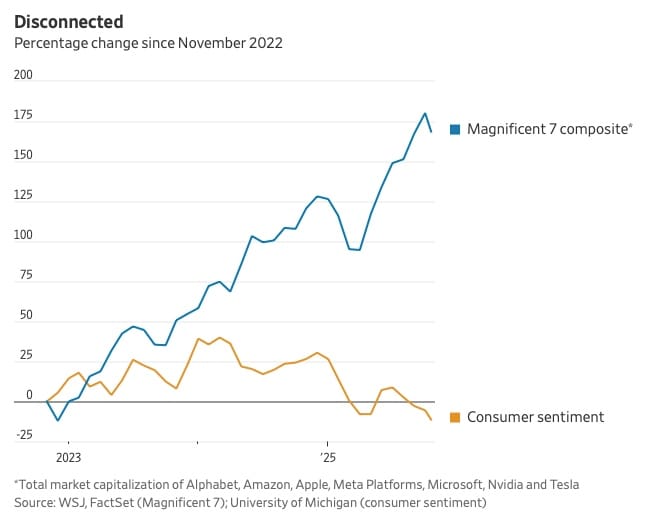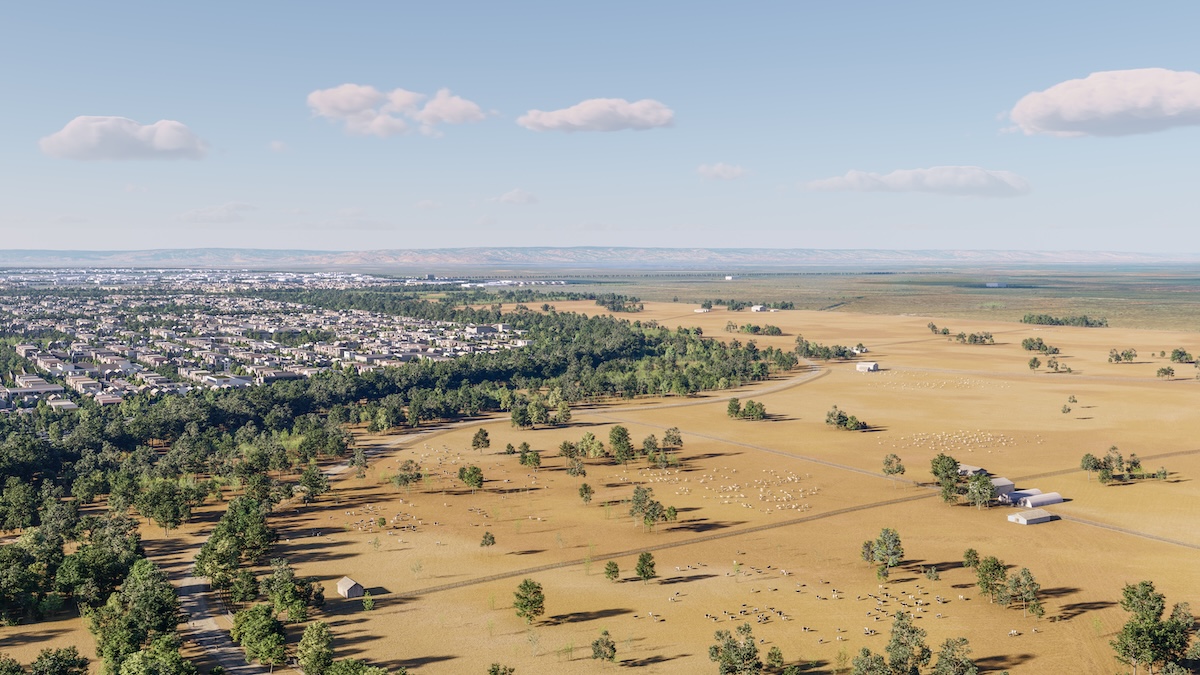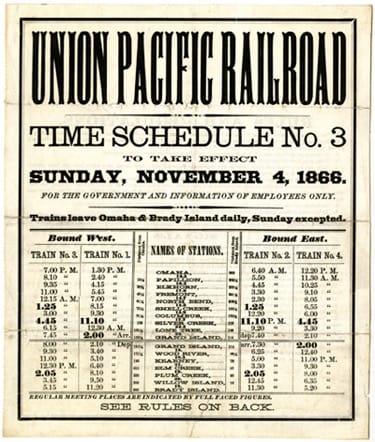Top 5 US news stories
November 18 2025

Wall Street Cheers AI Boom While Public Anxiety Mounts
Medicaid Patients Face ‘Ghost Networks’ as Insurers List Unavailable Doctors
Remote Work Shifts Stall Office Market Rebound Despite Economic Growth
Cash-Strapped Town Weighs Annexing Land for Billionaire-Backed City
U.N. Endorses Trump Peace Plan as U.S.-Led Hub Prepares for Postwar Gaza


1. Wall Street Cheers AI Boom While Public Anxiety Mounts
Artificial intelligence might be the most transformative technology in generations. It is also the most joyless. While Wall Street greets AI with open arms, ordinary Americans respond with ambivalence, anxiety, even dread. This isn’t like the dot-com era. A survey in 1995 found 72% of respondents comfortable with new technology such as computers and the internet. Just 24% were not. Fast forward to AI now, and those proportions have flipped: just 31% are comfortable with AI while 68% are uncomfortable, a summer survey for CNBC found. Why the difference? The dot-com bubble, like the AI boom, had its excesses and absurdity. But it also shimmered with optimism and adventure. From Fortune 500 CEOs to college dropouts, everyone had a web-based business idea. Demand for digitally savvy workers was off the charts. Today, the optimism is largely confined to AI architects and gimlet-eyed executives calculating how much AI can reduce head count while workers wonder whether they will be replaced by AI, or someone who knows AI. Meta Platforms, Microsoft and Amazon, three of the leading purveyors of AI, have all announced layoffs this year.

WSJ
2. Medicaid Patients Face ‘Ghost Networks’ as Insurers List Unavailable Doctors
Private Medicaid insurers dominate the government healthcare program that covers more than 70 million low-income and disabled Americans. But when Medicaid-plan enrollees need care, they often can’t get appointments with the doctors listed in those insurers’ networks. A Wall Street Journal analysis of state and federal data showed that the networks of doctors that insurers listed for their Medicaid members are less robust than they appear. Some doctors are erroneously shown in states or cities where they don’t actually work. Others won’t book appointments for Medicaid patients, who typically are far less lucrative than those with employer coverage. Some medical practices limit slots allotted for Medicaid visits, or simply won’t take new Medicaid patients. Medicaid-plan enrollees interviewed by the Journal described being unable to see listed doctors, leaving some facing long waits and others skipping care they can’t otherwise afford. “It’s a fake system,” said Elisha Yaghmai, a Kansas doctor who runs a company that provides physicians to rural hospitals. “It doesn’t actually get them care.” Many Americans who try to book medical appointments, no matter their insurer, are frustrated by long waits and confusing provider networks. Patients and doctors say those problems are worse for people in Medicaid plans. Insurers said they regularly audit their networks to verify accuracy and work hard to ensure members get needed medical care. They said there are various reasons some in-network doctors might not see Medicaid patients, including practice location, patient preferences and low demand for particular services.
WSJ

3. Remote Work Shifts Stall Office Market Rebound Despite Economic Growth
The emerging recovery in the U.S. office market is strikingly uneven, leaving many buildings, neighborhoods and entire cities behind. A handful of business districts, from New York’s Park Avenue to South of Market in San Francisco, are leading a turnaround. But most office markets are still burdened with empty space and anemic rents. The U.S. office vacancy rate is 14.1%, near a record high, according to real-estate data firm CoStar. Of the 12 largest markets the firm tracks, five are at their highest levels in 25 years and the others are just below. Those stubbornly high vacancies reflect a crucial difference between the current office market slump and previous ones: This one isn’t cyclical; it’s the result of structural changes in the workplace. Remote and hybrid work have rewritten employee habits and weakened the once-reliable connection between economic growth and rising office demand. Office occupancy rates plummeted in the aftermath of the 2008-09 financial crisis, then workplaces filled up when the economy rebounded and companies started to hire again. But in 2023 and 2024, when the U.S. economy grew at an average of about 2.7% as the fallout from the pandemic faded, office landlords still struggled to fill their space.
WSJ

4. Cash-Strapped Town Weighs Annexing Land for Billionaire-Backed City
Suisun City is a town of 30,000 in a neglected corner of the San Francisco Bay Area. Its two most prominent features are its marshy waterfront and its lack of money. The local government has spent the past several decades ping-ponging between the threat of insolvency and revitalization plans that work for a time and then fizzle out. Walking through the 19th-century downtown, past historic brick buildings with boarded-up windows and a redeveloped park where homeless people sleep, you see a city with good bones that wishes to be more, but can’t seem to figure out what. Enter Suisun City’s latest bid for renewal: a proposal to annex 22,873 acres of agricultural land owned by a company called California Forever, a development play backed by a group of Silicon Valley billionaires. California Forever’s hope is to build a new, up-from-the-ground city on yellow hills dotted with sheep and wind turbines. The point of the Suisun annexation is for each side to help the other solve a problem. California Forever’s problem is that it wants to build on unincorporated land in Solano County, which has a law forbidding the building of much of anything outside established cities. Suisun’s problem is that it is broke. If the idea is approved, Suisun would absorb California Forever’s land, turning the rural plot into a developable area — all while expanding Suisun’s footprint and securing a gusher of future tax revenue if and when anything ever gets built. California Forever has been provoking superlatives, good and bad, since the project was revealed two years ago. The company’s long-term plan is to build a walkable city of up to 400,000 people, about an hour north of San Francisco, with a manufacturing center and nearby shipbuilding facility along the Sacramento River. Renderings show a Brooklyn-esque neighborhood packed with three-to-five-story buildings surrounded by parks, plazas and farmers’ markets.


NYT
5. U.N. Endorses Trump Peace Plan as U.S.-Led Hub Prepares for Postwar Gaza
A. The United Nations Security Council on Monday approved President Trump’s peace plan for Gaza, a breakthrough that provides a legal U.N. mandate for the administration’s vision of how to move past the cease-fire and rebuild the war-ravaged Gaza Strip after two years of war. The Council’s vote was also a major diplomatic victory for the Trump administration. For the past two years, as the conflict between Israel and Hamas has raged, the United States had been isolated at the United Nations over its staunch support for Israel. The U.S. resolution calls for an International Stabilization Force to enter, demilitarize and govern Gaza. The proposal, which contained Mr. Trump’s 20-point cease-fire plan, also envisions a “Board of Peace” to oversee the peace plan, though it does not clarify the composition of the board. The resolution passed with 13 votes in favor and zero votes against. Russia and China, either of which could have vetoed it, abstained, apparently swayed by the support for the resolution from a number of Arab and Muslim nations: Egypt, Jordan, Qatar, Saudi Arabia and the United Arab Emirates, as well as Indonesia, Turkey and Pakistan, which is a member of the Council.
B. In a grungy industrial park in southern Israel, a massive, repurposed cargo warehouse is humming with hundreds of American and Israeli troops, Arab intelligence officers, international aid workers, and diplomats and military personnel from across Europe and as far away as Singapore. Their official mission is to help monitor the fragile cease-fire between Israel and Hamas in Gaza. But they have also been tasked with helping to craft ambitious plans for the enclave’s postwar future in line with President Trump’s 20-point peace proposal — disarming Hamas and rebuilding Gaza under a new, independent Palestinian administration. On Monday, the United Nations Security Council passed a resolution endorsing Mr. Trump’s peace plan, and it also called for an International Stabilization Force to enter, demilitarize and govern Gaza. Some U.S. military officials at the facility are working on operational plans for that force. A month into the hub’s operations, however, it is far from clear that they have made much headway. Officials liken the American-led Civil-Military Coordination Center, or C.M.C.C., as the operation is known, to a chaotic start-up. Most strikingly, there is no formal Palestinian representation in the building, prompting criticism among some diplomats and aid workers who say that an outside vision for Gaza is unlikely to work unless Palestinians have a significant voice. Some of those involved in the effort say that scenes of American soldiers tossing around ideas for how to rebuild the devastated Gaza Strip evoke uncomfortable memories of other U.S.-led attempts at reconstruction in Iraq and Afghanistan.

NYT
November 18 1863: Railroads create the first time zones
At exactly noon on this day, American and Canadian railroads begin using four continental time zones to end the confusion of dealing with thousands of local times. The bold move was emblematic of the power shared by the railroad companies.
The need for continental time zones stemmed directly from the problems of moving passengers and freight over the thousands of miles of rail line that covered North America by the 1880s. Since human beings had first begun keeping track of time, they set their clocks to the local movement of the sun. Even as late as the 1880s, most towns in the U.S. had their own local time, generally based on “high noon,” or the time when the sun was at its highest point in the sky. As railroads began to shrink the travel time between cities from days or months to mere hours, however, these local times became a scheduling nightmare. Railroad timetables in major cities listed dozens of different arrival and departure times for the same train, each linked to a different local time zone.
Efficient rail transportation demanded a more uniform time-keeping system. Rather than turning to the federal governments of the United States and Canada to create a North American system of time zones, the powerful railroad companies took it upon themselves to create a new time code system. The companies agreed to divide the continent into four time zones; the dividing lines adopted were very close to the ones we still use today.
Most Americans and Canadians quickly embraced their new time zones, since railroads were often their lifeblood and main link with the rest of the world. However, it was not until 1918 that Congress officially adopted the railroad time zones and put them under the supervision of the Interstate Commerce Commission.

We are temporarily pausing our podcasts as we revamp our app so any article can be read as audio
Found a mistake? Have a news tip or feedback to share? Contact our newsroom using the button below:
citizen journal offers three flagship products: a daily national news summary, a daily Kansas news summary, and local news and school board summaries from 29 cities across 5 states. Use the links in the header to navigate to national, kansas, and local coverage. Subscribe to each, some, or all to get an email when new issues are published for FREE!
Brought to you by (click me!)
Sources
- The Most Joyless Tech Revolution Ever: AI Is Making Us Rich and Unhappy (WSJ)
- Medicaid Insurers' Doctor Networks Are Often 'Ghost Networks' (WSJ)
- The Office Market's Budding Recovery Is Leaving Most Cities Behind (WSJ)
- Suisun City Makes an Offer to California Forever (NYT)
- U.N. Security Council Gaza Peace Plan (NYT)
- U.S. Israel Gaza Base Palestinians (NYT)






